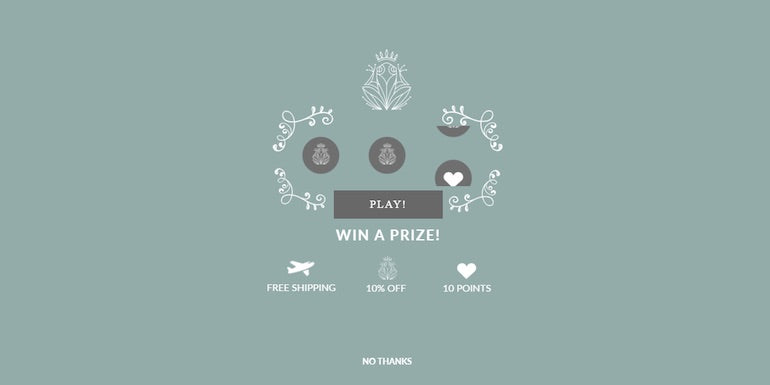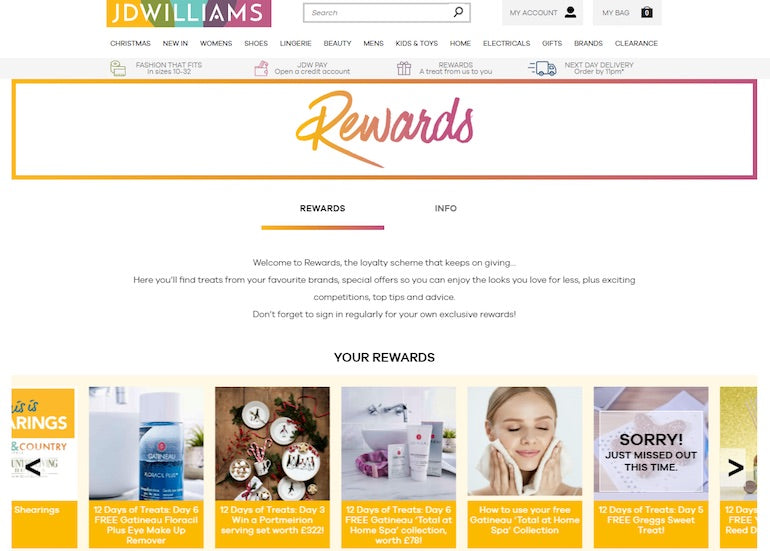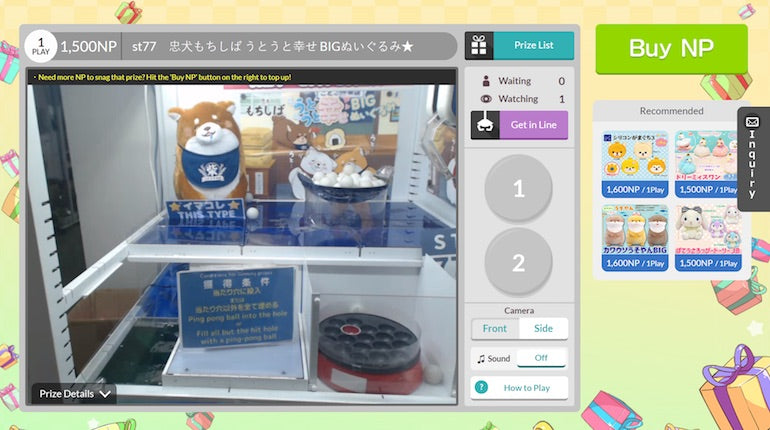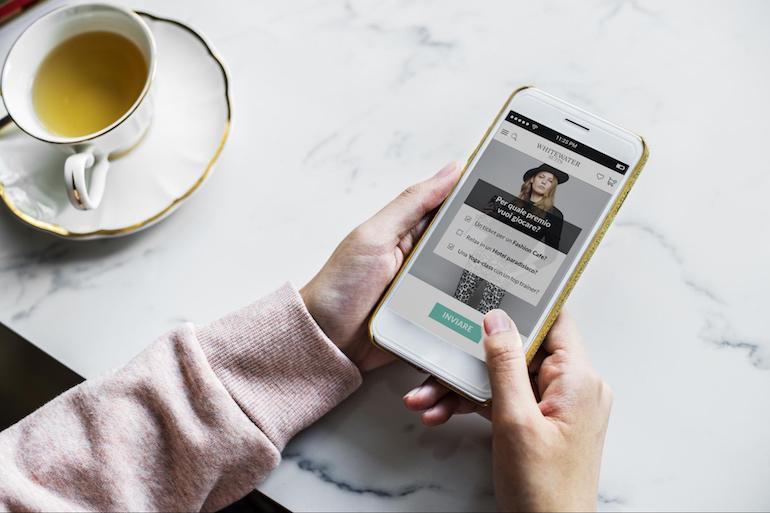Gamification is one of those buzzwords you often hear during brainstorming sessions, but the application of its principles can help keep customers happy and engaged with your client’s brand. That said, when you try to actually incorporate these principles into a business, you’ll quickly realize things aren’t as simple as they seem. The same goes for sophisticated customer retention solutions, such as loyalty programs.
Over the years, loyalty programs branched out from simply rewarding purchases with points and coupons, to now being capable of supporting a wider range of features. So when a client approaches you to potentially build their loyalty program from scratch, or improve something they already have, you need to know what options are available. Trust me, there’s so much more to gamified loyalty programs than badges, challenges, and leaderboards.
"There’s so much more to gamified loyalty programs than badges, challenges, and leaderboards."
In this article, we’ll showcase four examples of the more advanced approaches to gamification in loyalty programs. They might require some extra development effort on your part, but the results will no doubt add to the overall value of your client’s reward program.
Grow Volume 3: Building a Profitable Web Design Business
Get your free copy of Grow Volume 3: Building a Profitable Web Design Business sent to your inbox.
By entering your email - we’ll also send you marketing emails related to Shopify. You can unsubscribe anytime. Note: the guide won't be delivered to role-based emails, like info@, developer@, etc.
1. Prize wheel

Prize wheels are a fun and engaging way to build anticipation among your client’s loyalty program members. The concept is simple: people can spend their points to spin a wheel, and they’ll receive a reward based on which tile the needle stops at. The main appeal of prize wheels is randomness: members will watch the wheel spin in excitement, hoping for the best result.
Benefits
Great for spotlighting other rewards
Prize wheels, by design, dish out a wide range of rewards. For example, you can include bonus points, 10 percent coupons, one-time free shipping or even merch (if your client has some to spare) to function as prizes. However, never ever include empty spaces: landing on a “Better luck next time” tile means that users have lost their entry fee, which is a bad experience for them.
Prevent people from sitting on their points
Since members can spin the prize wheel repeatedly—as long as members can afford to pay the fee in points—it’s a great feature to entice people to actually spend their loyalty currency, instead of just hoarding it. Constant engagement also prevents your client’s customers from getting bored with the program.
It’s addictive (in a good way)
Be sure to put in the legwork design-wise, creating a fluid spin animation that’s satisfying to watch. Don’t forget to throw in some visual flair when the reward is announced, too. Why? So members will keep returning to this feature. Plus, customers are more inclined to buy from your client’s brand, just to earn points, which they can redeem at the wheel.
You might also like: Gamification in Business: How to Apply Gaming Principles to Digital Product Design.
2. Reward calendar

Reward calendars are based on the concept of Advent calendars, which are large tables with numbered brackets symbolizing a different day, each holding a piece of chocolate or small toy. This experience is all about eagerly anticipating the small gift waiting for you the next day. The same feeling can be reproduced with an online reward calendar.
First, implement a carousel-style section inside your client’s loyalty program membership page, where customers are able to scroll through unlocked rewards. Then, assign a different benefit to each day—complete with a colorful card dedicated to explaining the gift. Then sit back, and watch your client’s customers return day after day, just to see what kinds of surprises await.
Benefits
You can create seasonal offers
Preparing a reward for each day is a huge undertaking, both in terms of design and marketing. That’s why it’s best to use the reward calendar feature seasonally, so members don’t get tired of it. Christmas is an example of an ideal time to test your client’s audience’s reaction to this type of loyalty program gamification. Later on you can expand with other seasonal calendars, for example near Black Friday / Cyber Monday or Valentine’s Day.
Gain social media virality
Unlocking something new in the calendar is a joyous moment, which many members will want to share on social media. This sentiment allows you to use gamification in your client’s marketing, gaining virality on social media. By implementing a share button, you’re not only making the sharing more convenient for participants, but you’re also making it more likely that news of the event will spread thanks to word-of-mouth.
Utilize surprise and delight
Unlike the prize wheel, which draws its strength from interactivity, the reward calendar relies on a marketing strategy called surprise and delight. In short, if you can surprise customers with your client’s rewards, they’ll become more emotionally attached to your client's brand (and the program itself), which builds loyalty.
"In short, if you can surprise customers with your client’s rewards, they’ll become more emotionally attached to your client's brand (and the program itself), which builds loyalty."
3. Prize machines

An actual prize game is probably the most complicated, yet most promising feature for a loyalty program using gamification. Think about the fun little attractions you find in arcades—such as the infamous claw game—and digitize them. Alternatively, you can implement one from a third-party software vendor, then integrate your client’s loyalty program rewards into the mix.
Benefits
The ticket is a new reward
Each game play should cost a ticket, but because there’s a chance that members may lose the game, you shouldn’t allow the direct purchase of the tickets to avoid creating a negative experience. Instead, offer tickets as “freebies” with each purchase, give them to your client’s customers during promotional events, or let people win them from the prize wheel or reward calendar.
Daily engagement
If you want to increase the frequency at which your client’s customers visit the loyalty program, consider offering entry tickets for the prize machine as a daily login reward. Implementing a tracking feature for this shouldn’t be more difficult than adding a badge, for example, but doing so delivers your clients a far higher engagement rate for the gamified loyalty program.
You can showcase a unique selling point
Very few brands can say that their reward program has a prize machine in it. Developing one for your client is a huge selling point, and it’s a great feature your client can highlight in their marketing emails. And remember: this requires a lot of development time up front, but later on, you can use the template for future clients as well.
You might also like: 6 Examples of Retail Gamification to Boost Engagement and Sales.
4. Gamified quizzes

Quizzes, tests, and surveys help you learn a lot about a customer’s product preferences, lifestyle, and favorite brands. However, a loyalty program has to offer benefits. Otherwise, customers won’t spend time filling out surveys. As for gamification, it’s essential to design quizzes so interacting with them feels like a game and not a chore. Here are some quiz options.
Grow your business with the Shopify Partner Program
Whether you offer marketing, customization, or web design and development services, the Shopify Partner Program will set you up for success. Join for free and access revenue share opportunities, tools to grow your business, and a passionate commerce community.
Sign upVisual quizzes

The first—and probably most common—way to gamify a quiz is to ask a question, and then use two, four, or six images as answers—preferably with a tagline to make the concept clearer. This is most suitable when you’re looking to learn about a member’s lifestyle or personality.
Tinder-like quizzes
A more advanced (but also more engaging) type of gamified quiz uses Tinder-like “swipe” elements. This type of quiz works really well for gathering data on product preferences: you present a product image to the user, and they swipe left or right, depending on whether they like it or not. It’s easy and quick, so your client can gather more insight about their customers in a short amount of time.
Net Promoter Score (NPS) surveys

Last but not least, there are the classic NPS surveys, which are ideal for gathering information that is quantifiable. To build an NPS survey, create sliders, which members can adjust to give their answers. For even better results, make sure the answer displayed above the slider changes depending on the slider’s current position so that your client’s customers can better gauge their responses.
You might also like: Why Retailers Should Consider Gamification to Boost Engagement.
Game on!
Seeing the various ways loyalty programs fit right in with gamification can spark your imagination, and we hope this article has been a great start. Creativity is the bedrock of gamification, so if you want to add real value to your client’s loyalty program, make sure to come up with something fun, engaging, and above all, useful for them.
Have you seen any other great ideas for loyalty program gamification? If so, let us know in the comments below.


